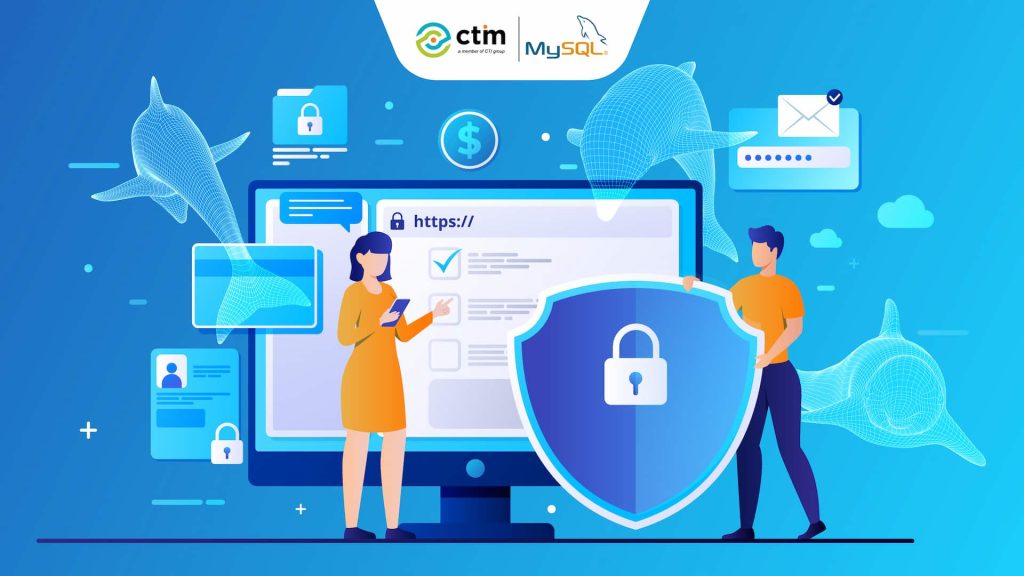Let’s be real — data is the new gold rush. Every business, from scrappy startups to giant enterprises, runs on information. And in fast-growing digital markets like Malaysia, that data moves fast — across apps, servers, and networks that never sleep.
At the center of it all? MySQL. It’s the engine behind millions of websites, e-commerce stores, logistics systems, and enterprise platforms. It’s powerful, reliable… and a massive bullseye for attackers who know exactly how valuable it is. When a single breach can take down operations, shatter customer trust, and burn through years of brand equity, MySQL security isn’t a checklist item — it’s mission-critical infrastructure.
This guide walks you through five battle-tested methods to lock down your MySQL environment, cut off the common attack paths, and keep your business humming no matter what the digital world throws your way.
Method 1: Strengthen Access Control
If your MySQL database were a house, access control would be the locks on your doors — and too many companies are still leaving the spare key under the mat. The first step toward real MySQL security is to make sure only the right people can get in, and only to the rooms they actually need.
Apply the least-privilege principle
Every account should serve a purpose. Developers don’t need admin powers, and backup scripts don’t need full database access. The least-privilege rule limits damage if a credential ever gets compromised. It’s simple: the fewer privileges in play, the smaller your attack surface.
Enforce strong authentication
Passwords alone are yesterday’s security. Use authentication plugins or connect MySQL to external identity systems like LDAP or PAM to centralize and harden your logins. Tie every access point back to verified, auditable identities — no ghost accounts, no guesswork.
Restrict and secure remote access
Don’t let just anyone knock on your database door. Limit remote connections to trusted IP addresses and require secure tunnels like SSH or VPN. Every open port is a potential attack vector — close what you don’t need, and encrypt everything you do.
Method 2: Encrypt Data at Rest and in Transit
Encryption isn’t just a fancy feature — it’s your database’s last line of defense. When attackers get past the walls, encryption keeps your information unreadable and useless to them. Protecting your MySQL data both while it’s stored and while it’s moving across networks is non-negotiable.
Enable Transparent Data Encryption
Turn on MySQL’s Transparent Data Encryption (TDE) to secure stored data, logs, and backups. Even if someone manages to access your physical files, the information inside stays scrambled and inaccessible without the right keys. Encryption at rest is your safety net when all else fails.
Secure connections with SSL/TLS
Data in motion is a hacker’s favorite target. Using SSL or TLS ensures every bit that travels between your client and server stays private and tamper-proof. No more eavesdropping, no more data leaks riding on open connections.
Rotate and protect encryption keys
Your encryption is only as strong as the keys guarding it. Rotate them regularly, store them away from the database server, and document the process. Key management done right keeps your protection fresh — and keeps attackers guessing.
Method 3: Audit and Monitor Database Activity
You can’t protect what you don’t see. The best MySQL security setups don’t just block attacks — they watch everything. Continuous monitoring turns your database from a black box into a transparent system where nothing slips through unnoticed.
Enable the MySQL Audit Plugin
Turn on the MySQL Audit Plugin — available in both Enterprise and open-source versions — to record logins, data access, and user actions. It’s like having a security camera inside your database, giving you a clear trail of who did what and when.
Centralize logs for real-time visibility
Don’t let logs sit and collect dust. Forward them to a SIEM or monitoring platform so your security team can analyze them in real time. This central view helps detect patterns, trace anomalies, and respond to issues before they escalate.
Set alerts for suspicious activity
Not every threat is obvious — some creep in quietly. Configure alerts for red flags like privilege escalations, failed logins, or unusual query patterns. A few smart alerts can save hours of cleanup later.
Read Also: DBaaS Explained: The Secret Behind Smarter, Faster Databases
Method 4: Secure Configuration and Hardening
Even the strongest database can crumble if the basics are ignored. Misconfigurations are one of the most common reasons MySQL servers get compromised — not because the software failed, but because the setup left the door open. Securing and hardening your environment keeps small oversights from turning into major breaches.
Run MySQL secure installation
Start with the built-in mysql_secure_installation tool. It cleans up your setup by removing anonymous users, disabling test databases, and tightening authentication defaults. Think of it as your MySQL hygiene check — simple, fast, and essential.
Disable risky features and restrict access
Features like local_infile may seem harmless but can be exploited to read sensitive files. Turn off what you don’t use, limit the MySQL port to trusted hosts, and make your attack surface as small as possible. The fewer entry points, the safer your system.
Keep systems patched and permissions clean
Security doesn’t stop at MySQL. Keep your operating system, firewall, and file permissions updated and reviewed regularly. A neglected patch or an overly broad permission can undo months of careful configuration in seconds.
Method 5: Stay Ahead with Regular Updates and Vulnerability Management
Cybersecurity is a moving target — the second you think you’re done, a new exploit shows up. The truth is, no system stays secure forever. Staying one step ahead means keeping your MySQL environment fresh, patched, and continuously checked for weaknesses before someone else finds them.
Keep MySQL versions up to date
Every new MySQL release doesn’t just bring performance boosts — it closes the doors left open by older builds. Staying current means you’re not running code with known vulnerabilities. Schedule regular upgrade cycles and make patching part of your normal maintenance rhythm.
Track CVEs and apply fixes fast
Oracle regularly publishes Common Vulnerabilities and Exposures (CVEs) for MySQL. Reviewing these and applying the related patches quickly keeps your defenses sharp. The faster you act, the smaller the window attackers have to exploit known flaws.
Run regular vulnerability scans
Use vulnerability scanning tools to spot misconfigurations, missing patches, or weak permissions before they become problems. Automated scans paired with manual reviews give you the full picture of your database’s health and resilience.
Conclusion: Secure Your Data with the Right Partner
Building strong MySQL security isn’t just about tools — it’s about strategy, consistency, and having the right expertise by your side. From access control to encryption and continuous monitoring, every layer you add strengthens your defense and keeps your business moving safely in the digital fast lane.
If you’re ready to turn this vision into reality, Computrade Technology Malaysia (CTM) is here to help. As part of the CTI Group, Computrade Technology Malaysia (CTM) enables organizations to unlock the full potential of MySQL and Oracle Cloud with end-to-end support — from planning and deployment to optimization and beyond.
Reach out to us today and take the first step toward a smarter, more scalable, and future-ready database strategy.
Author: Danurdhara Suluh Prasasta
CTI Group Content Writer



